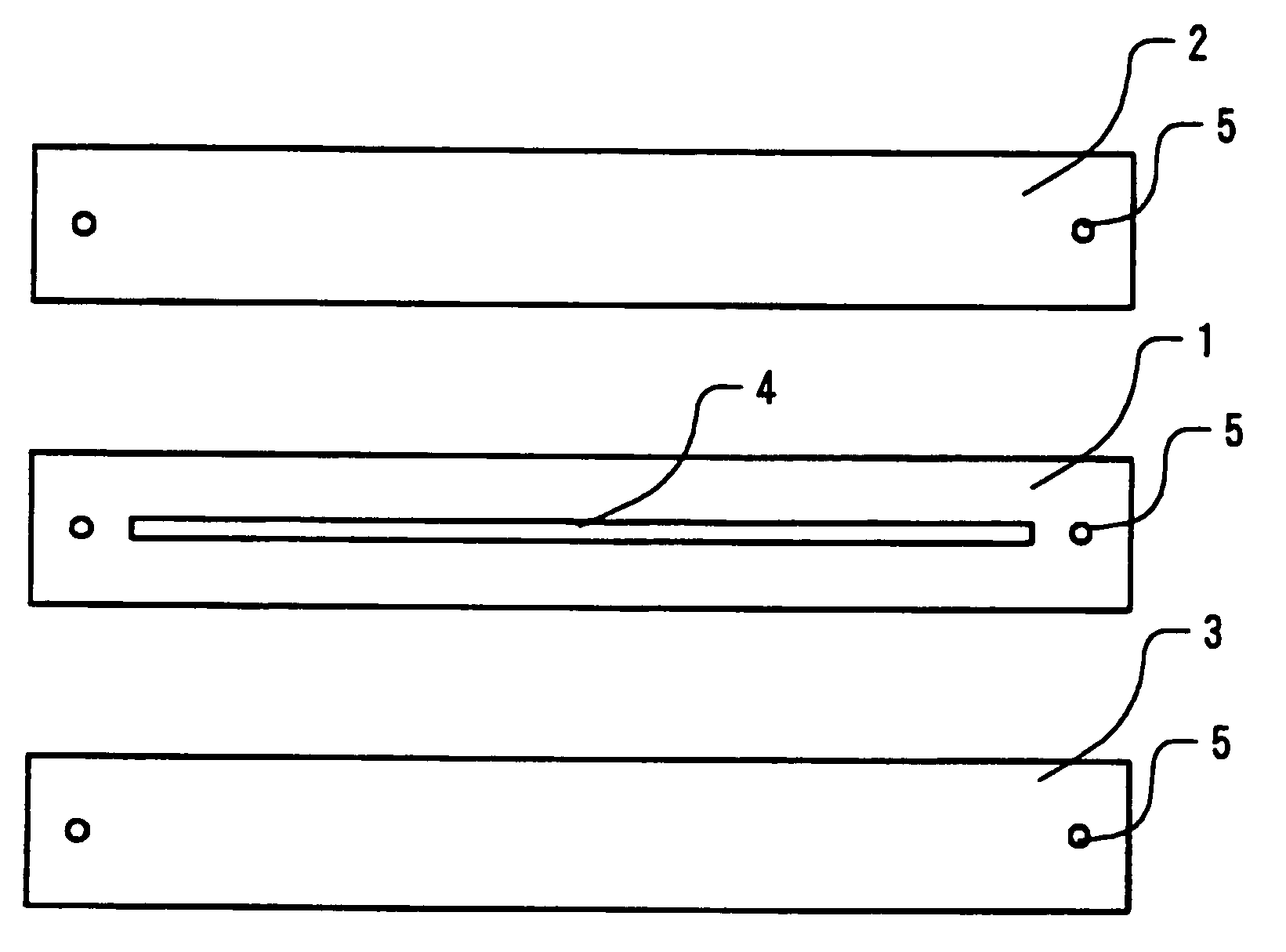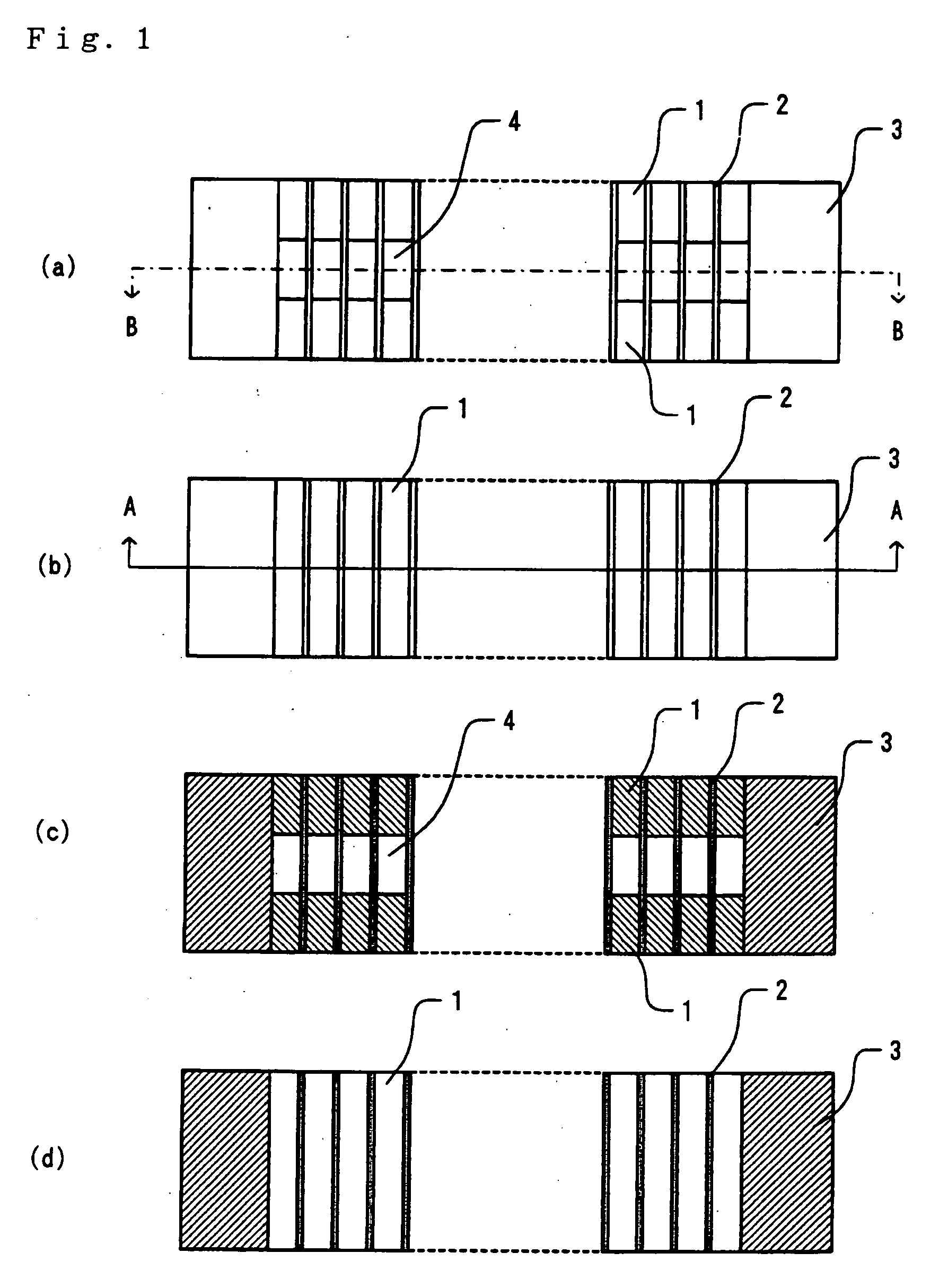Collimator and spectrophotometer
- Summary
- Abstract
- Description
- Claims
- Application Information
AI Technical Summary
Benefits of technology
Problems solved by technology
Method used
Image
Examples
Embodiment Construction
[0050] Embodiments of the present invention will be described hereafter using the figures. FIG. 1 is a diagram depicting a conceptual outline of the collimator according to the first example of the embodiments of the present invention. In FIG. 1, (a) is a plan view; (b) is a front view; (c) is an A-A cross-sectional view; and (d) is a B-B cross-sectional view. Because this figure is a conceptual diagram for describing the structure, the dimensions shown do not correspond to actual dimensions.
[0051] As is apparent from the diagram, the collimator is obtained by the alternate stacking of metal sheets 1 (40 μm thick) having holes 4 with a width of 2200 μm in the center thereof, and metal sheets 2 (10 μm thick) without holes (here, “the metal sheets 1 with the holes 4” describes in the state in which they exist before being cut in the manner described below, the upper portion and the bottom portion of the metal sheets 1 in the figure (in the finished product) are not connected with eac...
PUM
| Property | Measurement | Unit |
|---|---|---|
| Length | aaaaa | aaaaa |
| Length | aaaaa | aaaaa |
| Length | aaaaa | aaaaa |
Abstract
Description
Claims
Application Information
 Login to View More
Login to View More - R&D
- Intellectual Property
- Life Sciences
- Materials
- Tech Scout
- Unparalleled Data Quality
- Higher Quality Content
- 60% Fewer Hallucinations
Browse by: Latest US Patents, China's latest patents, Technical Efficacy Thesaurus, Application Domain, Technology Topic, Popular Technical Reports.
© 2025 PatSnap. All rights reserved.Legal|Privacy policy|Modern Slavery Act Transparency Statement|Sitemap|About US| Contact US: help@patsnap.com



